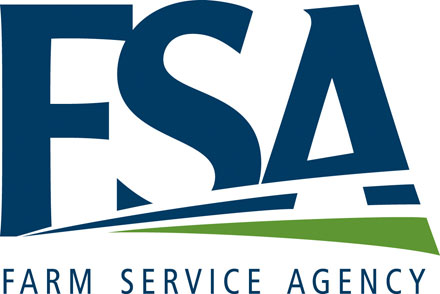Here’s what we’re reading and what they’re reading at the National Farmers Union:
Obama may be sending trade deals to Capitol Hill this week
Politico
President Barack Obama may send the long-delayed trade deals with South Korea, Colombia and Panama to Congress this week, according to new reports.
The three trade pacts could potentially boost U.S. exports by $13 billion annually, the Wall Street Journal reported on Monday. With the deals headed to Congress for consideration this week — sources told the paper Obama could forward the legislation as early as Monday — the three agreements could pass in mid-October after years of debate.
The White House and Republican leaders are looking to approve the three pacts, along with a Trade Adjustment Assistance compromise bill, which would offer extended unemployment benefits to workers who become unemployed due to the impact of international trade.
Passage of the South Korea pact before President Lee Myung-bak’s Oct. 13 state visit is a major goal, and a congressional source told the paper it would be “tough, but close.”
Committee hearings could begin as early as Wednesday, and Congress has 90 days to approve the deals.
The three deals are expected to widely impact U.S. agriculture, auto makers, financial services, legal and healthcare companies, and there would be added exports and foreign services available in the U.S. as well, the Wall Street Journal noted.
Ag provides a harvest of budget cuts
Kansas City Star
In the summer debt ceiling deal, Congress set up a “supercommittee” to find $1.2 trillion in additional budget cuts over the next decade. The panel began work — and so did the lobbyists. Among the most energetic are those defending farm subsidies.
The wholesale elimination of the nation’s agricultural programs won’t happen. Yet it should be possible to push through two important reforms: Terminate annual cash payments and create an effective income cap to curtail subsidies for wealthy farmers. As a bonus, one might even hope for an end to ethanol subsidies.
Cash payments are outlays based on acreage and historic yield, and they are paid whether farmers grow anything or not. Cost to taxpayers: nearly $5 billion a year.
Blake Hurst, president of the Missouri Farm Bureau, says the program should continue, partly because many farmers still depend on those checks. Hurst says he understands that agriculture will face cuts this year, but he would prefer that all programs continue, even at lower amounts.
That, however, would make it easier for lawmakers to add money to those budget items later. Eliminating a program entirely ensures that the savings continue.
The Obama administration agrees that cash payments should cease. Even some farmers no longer support them. Craig Lang, president of the Iowa Farm Bureau, told The New York Times that with the economy so weak, he could not justify taking the money.
Dairy legislation, crop insurance and an uncommunicative ‘super committee’
Penton Business Media
On Friday afternoon, the Dairy Security Act of 2011 was introduced in the House. Sponsored by Minnesota Rep. Collin Petersonand Idaho Rep. Mike Simpson, the act has come following a string of turbulent years in the dairy industry alongside numerous congressional hearings and attempted regulatory fixes.
According to National Milk Producers Federation, which is pleased with the proposed legislation, the act would:
Make voluntary the Dairy Market Stabilization Program, which will help reduce milk output during times of low margins. If producers enroll in the USDA’s subsidized margin insurance program, they will automatically be enrolled in the Dairy Market Stabilization Program. This will provide alerts when additional production may affect overall margins.
Extend the “basic” level of margin insurance coverage to 80 percent of a producer’s production history, from 75 percent as initially proposed. The “supplemental” margin coverage option is also improved, as it will allow producers to purchase insurance for growth in their milk production history.
Include a refined provision in the Dairy Market Stabilization Program to ensure that it does not activate during times when signals for farmers to reduce production may impinge on the ability of the U.S. to export dairy products.
Crop insurance cutbacks
News Channel 10
In an effort to cut into America’s deficit, President Obama plans to take $8 billion from the crop insurance program.
Crop insurance helps farmers sustain themselves when they lose large portions of crops, but this assistance could be in jeopardy.
Crop insurance is farmer, Dale Artho’s best tool to manage risk. His risk is the weather, something he faces each year when he plants his livelihood.
Artho explains, “We provide a safe, affordable food supply. Without crop insurance, it’s going to be very difficult to do that.”
That is because the White House’s plan calls for changes that will affect both insurance companies and producers.
Dede Jones with AgriLife Extension says, “If they’re going to change how they pay on these policies, these guys really need to get some insurance payments this year. The dry land crop was completely destroyed and we are seeing about a 20-50% reduction in irrigated crop yields.”
Kasich at Farm Science Review: Ag is base for economic growth
Farm & Dairy
LONDON, Ohio — Ohio Gov. John Kasich wants a strong agriculture industry in the state. Because that means a strong economy in general.
Speaking Sept. 20 at the Farm Science Review in London, Ohio, Kasich said the Buckeye State is underpinned by an agricultural economy, an ag economy that is a $102 billion industry.
It’s a base of economic growth, and job creation, Kasich added.
“When farmers do well, Ohio does well; when farmers don’t do well, Ohio suffers.”
And it’s an industry that can grow, the governor added, citing examples of food processing, bioproducts and “flying cows to Istanbul,” which is happening now.
“Folks, agriculture is so important,” Kasich said.
State targets Lake Erie Algae
Columbus Dispatch
Ohio spent millions of tax dollars this summer fighting toxic, blue-green algae in Grand Lake St. Marys with chemicals, dredging equipment and nets.
But what about Lake Erie, which has algae problems, too?
In fact, Erie saw a record toxic-algae bloom spread across its western basin this year, adding to the “dead zone” where fish can’t live and threatening the lake’s $10 billion annual tourism industry.
The state plans to form two study groups to look for solutions.




